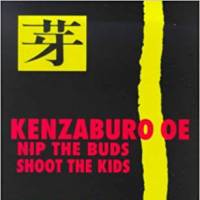Kenzaburo Oe's first novel, published in 1958 when he was only 23, tells of a group of reformatory school children evacuated to a remote village to escape wartime bombing raids, only to be cut off and abandoned when plague breaks out. Sneaking into houses to find food, the children assume control of the village as they encounter a Korean boy who teaches them how to hunt, a deserted soldier and a local girl whose mother has just died.
Nip the Buds, Shoot the Kids, by Kenzaburo Oe, Translated by Paul St. John Mackintosh and Maki Sugiyama.
189 pages
MARION BOYARS PUBLISHERS, Fiction.
Published four years after William Golding's "Lord of the Flies," this novel inverts that tale of civilization breaking down into primeval savagery. Here the narrator's younger brother must immediately dream up crimes to establish his place in the group of juvenile delinquents — yet the children prove to be far less in need of "reform" than the cruel and vicious villagers.
It's intriguing to consider Oe (born 1935) as a pivotal, transitional figure between Yukio Mishima (born 1925) and Haruki Murakami (born 1949). Mishima was determined to marshal the traditional beauty of the Japanese language; Murakami discovered an escape route into a liberating world of American literature.
But for Oe, there was no sense of beauty or escape. The Japanese language is here "clotted," deliberately transformed into something brutalized. The children, savagely abused by the insanity of the adult world, are repeatedly described as "caged beasts," in a book that presents a searing allegorical condemnation of the wartime generation that valorized madness and killing.

















With your current subscription plan you can comment on stories. However, before writing your first comment, please create a display name in the Profile section of your subscriber account page.